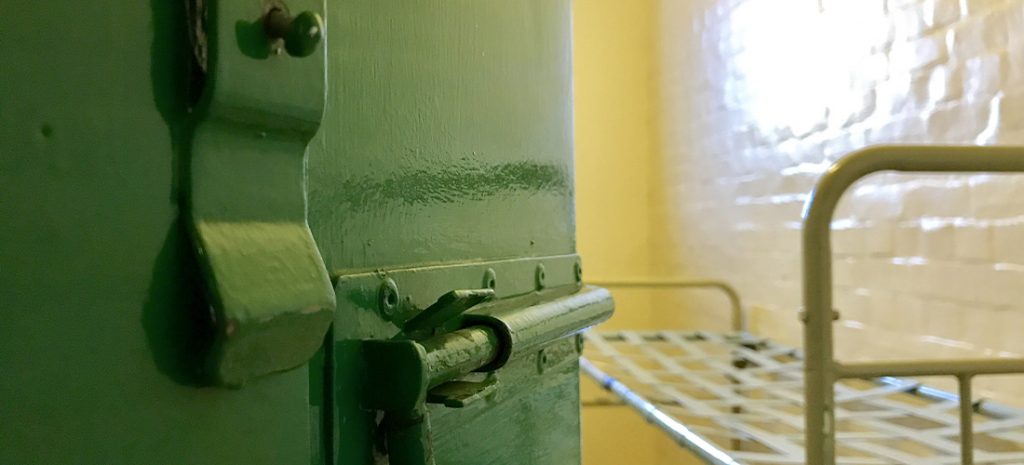New figures from the Ministry of Justice show a rising number of contraband mobile phones being found in prisons in England and Wales, with 11,792 handsets seized from 2019 to 2020 – up 3 per cent on the year before. They are valuable commodities in prisons – costing between £400 and £1000 just to borrow – and are smuggled in via tennis balls, drones, rats and various other methods, writes Andy Gent, pictured, CEO of telecoms anti-fraud software firm Revector.
Mobile phones pose a significant threat to prison security, acting as a key facilitator of criminal and terrorist activity and providing a stimulus to a violent culture by allowing prisoners to intimidate other prisoners or witnesses on the outside. Prisoners have been found to use smuggled phones to buy and sell drugs, import firearms, plan escapes, and arrange murders from within prison walls. In 2015, a prisoner at Wandsworth Prison masterminded a plot to import machine guns into the UK using a contraband mobile phone.
With pressure mounting on the prison service to address the issue and resources limited to crackdown on illicit mobile phones, innovation is needed. And the solution lies in using technology to build social intelligence about the prison.
Changing the legacy approach
Prisons traditionally use “jamming” to cut communications in an attempt to clamp down on illicit mobile phone use. This legacy approach works by transmitting a signal to prevent the handset receiving its base station signal. All phones and SIM cards within its reach will then have their mobile reception blocked, including those belonging to prison staff. Not only does this prevent operational calls being made by staff but impacts nearby businesses and households and more crucially fails to build any intelligence and insights around illegal activity taking place inside and beyond the prison walls.
The key to monitoring illicit mobile phone use is building social intelligence. Because SIM cards are easier to smuggle into prisons than mobile handsets, prisoners often use one phone and pass it around, using different SIM cards. By understanding how devices and SIM cards move through the prison, security teams can identify common behaviours and trends to identify or prevent criminal activity. This allows staff to undertake in-depth analysis of the communications to support ongoing investigations and take positive action by cutting the communications.
IMSI and WiFi-catchers
Following ministerial approval, prison officials can now also use IMSI and WiFi-catcher technology to pinpoint the location of contraband mobile phones, down to the precise cell. An IMSI-catcher fools nearby mobile phones into connecting to it, meaning prison officials can gain access to the IMSI number. An IMSI is a 15-digit number assigned to the SIM card which is unique to a subscriber and identifies the mobile user within the network. The information gathered from the IMSI number can be used to monitor continued use of a mobile device, its location and conversations taking place.
Because smartphones by default are constantly searching for a WiFi connection when switched on, WiFi-catchers can identify any contraband mobile phones within the prison site quickly and effectively. A network of IMSI and WiFi-catchers can be deployed permanently within a prison environment, with the capability to set zones and “whitelist” prison staff to mark their devices as safe and focus detection on contraband mobile phones.
Privacy versus security
Interference technology such as IMSI-catchers has generated a huge amount of debate: are they an invasion of privacy? Do they infringe human rights? Or could they improve the reputation of UK prisons and even aid national security?
One of the main issues associated with this type of technology relates to the privacy of surrounding residents and fears of their phones being monitored. The Prisons Act 2012 states fake base stations such as IMSI-catchers could only be deployed within prison walls. However, amendments to the bill in 2017 authorised mobile network operators to deploy interference devices to monitor the use of mobile phones in prisons, which has raised concerns about the relaxed rules around the location of IMSI-catchers.
The miniaturisation of technology has meant that, where IMSI or WiFi-catchers could only be used in a fixed place in the past, now they can be made portable and more targeted to specific areas of prisons. This means the areas outside the prison complex such as car parks, access roads, or residential areas are not affected. Also, prisons have the capability to “whitelist” surrounding residents’ numbers so their phones are not affected by the IMSI technology.
One step ahead
There is no one-size-fits-all approach to prison security. Instead, a multi-layered and holistic approach which encompasses innovative mobile technologies, bolstered by additional aspects such as CCTV, door access, visitor management and comprehensive training is crucial to managing the issue of illicit mobile phones.
Legacy measures such as phone “jamming” are unsustainable and ineffective in today’s digital communications landscape. As security technologies evolve, so do the prisoner’s attempts to smuggle in contraband. Prisons need to be ahead of the curve and embrace new technologies to protect the public, the prisoners and themselves.


